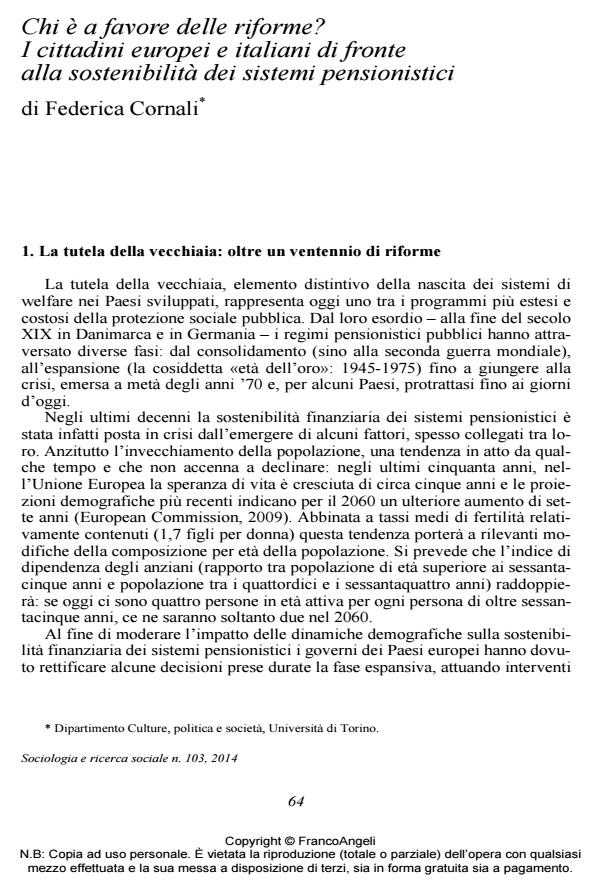Chi è a favore delle riforme? I cittadini europei e italiani di fronte alla sostenibilità dei sistemi pensionistici
Titolo Rivista SOCIOLOGIA E RICERCA SOCIALE
Autori/Curatori Federica Cornali
Anno di pubblicazione 2014 Fascicolo 2014/103
Lingua Italiano Numero pagine 24 P. 64-87 Dimensione file 146 KB
DOI 10.3280/SR2014-103004
Il DOI è il codice a barre della proprietà intellettuale: per saperne di più
clicca qui
Qui sotto puoi vedere in anteprima la prima pagina di questo articolo.
Se questo articolo ti interessa, lo puoi acquistare (e scaricare in formato pdf) seguendo le facili indicazioni per acquistare il download credit. Acquista Download Credits per scaricare questo Articolo in formato PDF

FrancoAngeli è membro della Publishers International Linking Association, Inc (PILA)associazione indipendente e non profit per facilitare (attraverso i servizi tecnologici implementati da CrossRef.org) l’accesso degli studiosi ai contenuti digitali nelle pubblicazioni professionali e scientifiche
In recent decades, the increase in life expectancy, changes in the labour market, and the economic and financial crisis have impaired the sustainability of pension systems in many developed countries. This has lead to the approval of reforms that modify pension systems in the direction of a reduction in the number and generosity of pension benefits, as well as a reduction of the length of the period of receipt. In Italy, given a particularly severe situation - enormous public debt, economic stagnation and demographic decline - a strict law was passed that radically reformed the Italian pension system. This study aims to describe the opinions of European citizens about aging and pensions, based on sets of heterogeneous national and international data (survey Aging, 2011, Eurobarometer surveys, 2001, 2004 and 2012), and to identify the reasons behind opinions that reject or accept the pension reforms.
Federica Cornali, Chi è a favore delle riforme? I cittadini europei e italiani di fronte alla sostenibilità dei sistemi pensionistici in "SOCIOLOGIA E RICERCA SOCIALE " 103/2014, pp 64-87, DOI: 10.3280/SR2014-103004